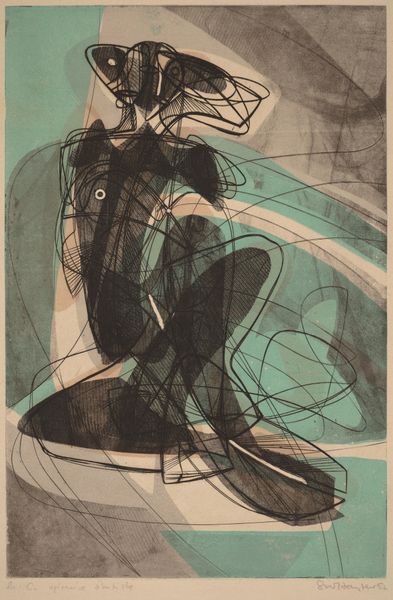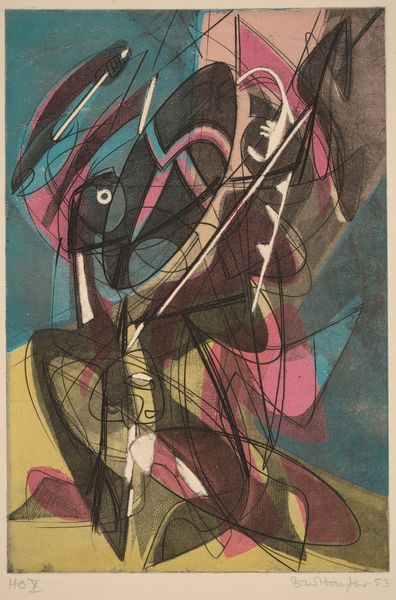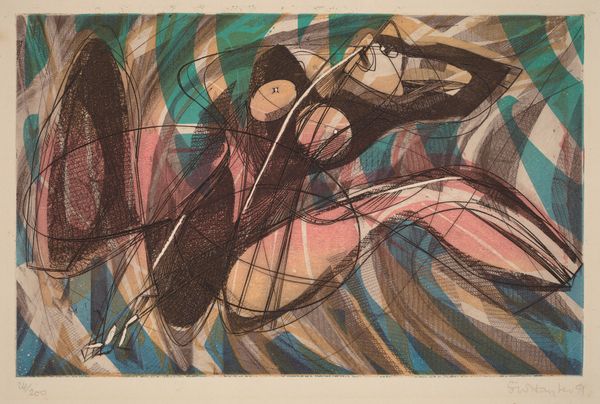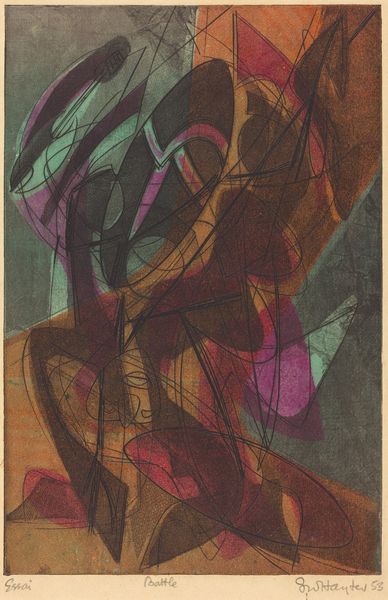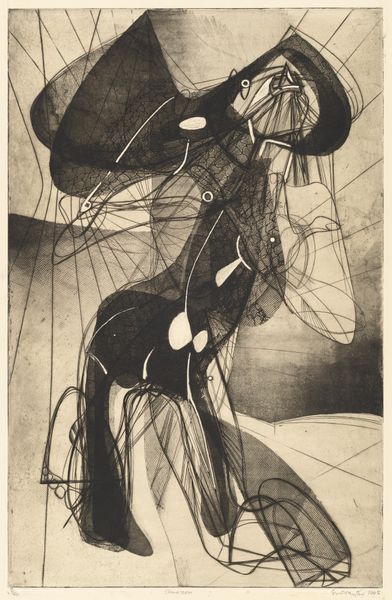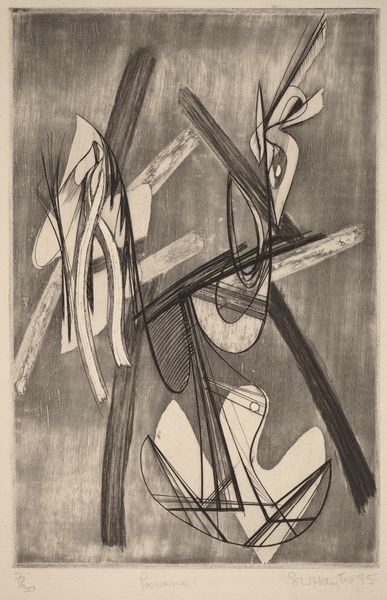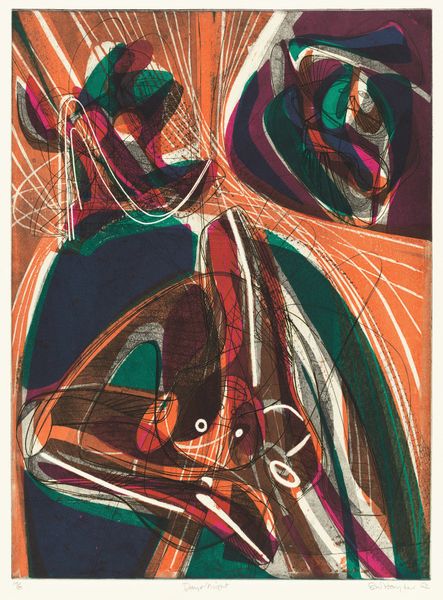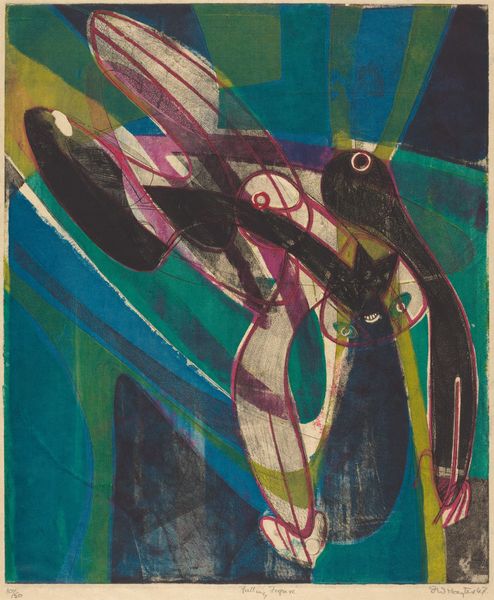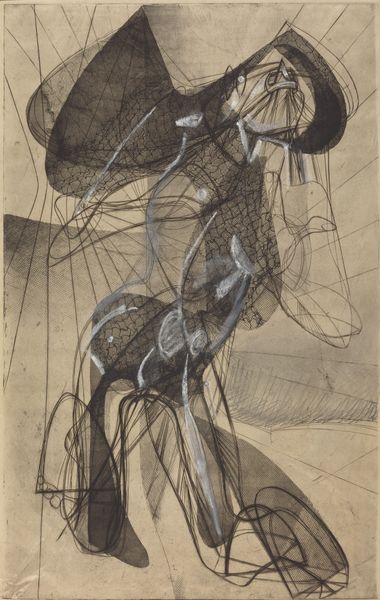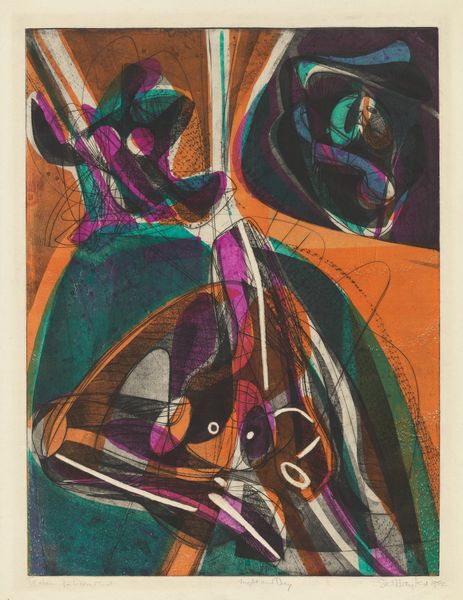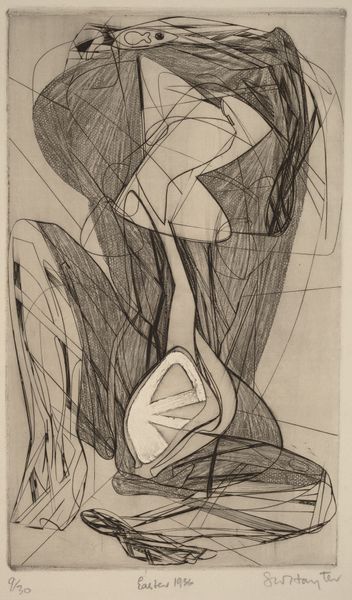
print, etching
#
abstract-expressionism
# print
#
etching
#
form
#
abstraction
#
line
#
watercolor
Dimensions: plate: 39.4 x 24.1 cm (15 1/2 x 9 1/2 in.) sheet: 56.8 x 37.8 cm (22 3/8 x 14 7/8 in.)
Copyright: National Gallery of Art: CC0 1.0
Editor: This is "Danse du Soleil," or "Sun Dance," a 1951 etching by Stanley William Hayter. The swirling lines and shapes are intriguing, almost like a chaotic yet energetic dance. How do you interpret this work? Curator: It's important to consider the context. Hayter's Atelier 17 was incredibly influential in the mid-20th century, fostering a new approach to printmaking, and especially abstraction. He encouraged experimentation. Think about the post-war period. What societal shifts might have influenced a move towards abstraction and fragmented forms like these? Editor: I guess after experiencing so much trauma and upheaval, artists might be less interested in traditional representation. They wanted to explore inner worlds, or challenge existing structures. Curator: Exactly. And Hayter, along with the Abstract Expressionists, was challenging the established art world, dominated by traditional European styles. Abstraction became a powerful visual language for expressing new realities. Do you see any influences from surrealism here, given its biomorphic forms? Editor: Yes, I can see some parallels. It feels like forms are emerging from the subconscious, not quite recognizable but full of energy. How does the "sun dance" title fit into all this? Curator: That's a key question! "Sun Dance" could be read as an attempt to capture the dynamism and energy of life itself. Consider also the indigenous rituals the title invokes, a search for connection and renewal in the face of societal change. Editor: So, it's not just about abstract shapes, but also about the cultural and historical moment and the artist's intention. Curator: Precisely. It reveals how abstraction can be deeply engaged with the world around it. Editor: This has given me a lot to consider; looking at this print beyond its face value and to consider the historical forces that made it possible is really fascinating. Curator: Indeed, viewing art as a product of its time gives it another dimension, highlighting art's crucial role as a mirror reflecting societal complexities.
Comments
No comments
Be the first to comment and join the conversation on the ultimate creative platform.
